
 |
|
|
Fruits
Volume 58 Number 17 Date 08/29/2013 STINK BUG - An orchardist in Trempealeau County reports that these insects have been the primary cause of asurface damage to apples and peaches this season. Feeding and probing by the nymphs and adults results in visible injury, posing an economic risk to maturing fruits. A single adult or nymph can potentially damage many apples. If the feeding occurs just prior to harvest, depressions on the fruit surface may not develop until after a period of time in storage, which was the case in Trempealeau County. Scouting is strongly recommended at this time. The highest numbers usually occur on the edges of orchards bordering woods or agronomic crops. SPOTTED WING DROSPHILA - Larvae and/or adults have been confirmed in 20 Wisconsin counties as of August 28. This insect poses a serious risk to ripening fruit this year, making it imperative for growers with SWD infestations to continue treatments every 4- to 5-days through harvest. A list of insecticide options can be found on the UW-Madison SWD website. For organic operations, the OMFI-approved insecticides PyGanic and Entrust are available for SWD control. APPLE MAGGOT - Fly activity has generally decreased with the dry weather, but enough adults are still present to cause problems in late cultivars. Counts varied from 1-5 per trap for the period of August 22-28 with the weekly high count registered in Dane County. JAPANESE BEETLE - Reports of continued feeding on apples, grapes and raspberries were received in the past week. Levels in orchards currently vary by region of the state and the effectiveness of the control measures applied earlier this month. At most sites, earlier sprays effectively regulated beetle populations. OBLIQUEBANDED LEAFROLLER - Orchardists are reminded to maintain pheromone traps for this insect throughout September. Second generation larvae occasionally cause significant fruit damage late in the growing season and moth counts in late August and September can be an indication of damage potential by first brood larvae appearing next spring. SPOTTED TENTIFORM LEAFMINER - The third and last flight of the season has peaked and is now declining at most orchards. Moth numbers have been very high at some locations during this flight, with counts of 700-1,359 moth registered in Iowa, Racine and Richland counties since mid-August. Another larval generation should be anticipated in September based on the trap counts registered in the last two weeks. Apple growers experiencing large numbers of third brood moths may assess infestations by monitoring orchard perimeters for leaf mines. CODLING MOTH - Counts remain unusually high for late August. The weekly average based on reports from 18 orchards was 15 moths per trap, with an exceptional count of 63 moths registered near Turtle Lake in Polk County. As stated last week, the peak of the second flight has occurred at most locations, but additional treatments may be necessary before harvest if the moths remain numerous. BROWN MARMORATED STINK BUG - Fruit growers are advised to watch for this pest next month and in October as the bugs swarm on warm fall days in search of protected, overwintering sites. Brown marmorated stink bug is thought to be established at very low levels in Dane and Jefferson counties, although it has never been detected in any fruit, vegetable or field crop anywhere in the state. Similar to the multicolored Asian lady beetle and boxelder bug, BMSB aggregates on the exteriors of buildings on warm fall days in search of protected, overwintering sites. Any swarms of stink bugs noticed this fall should be reported to DATCP at 1-866-440-7523. -- Krista Hamilton, DATCP Entomologist 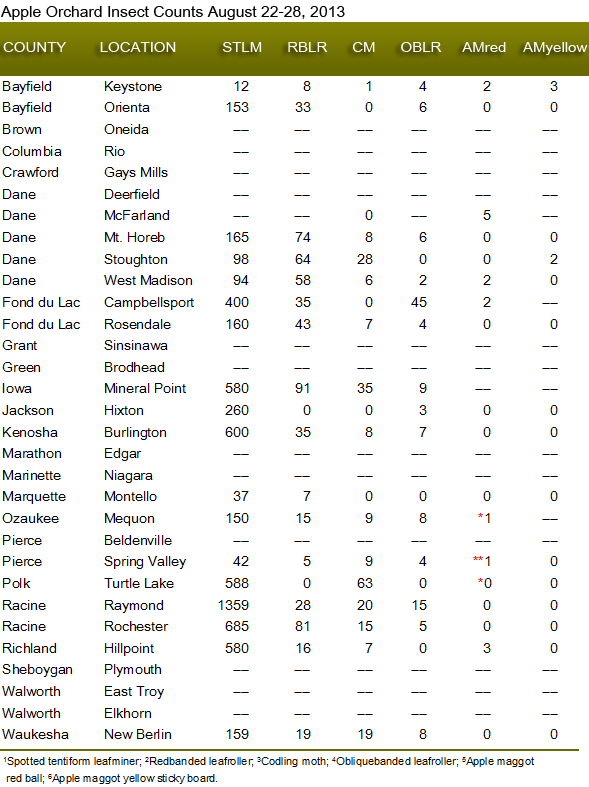
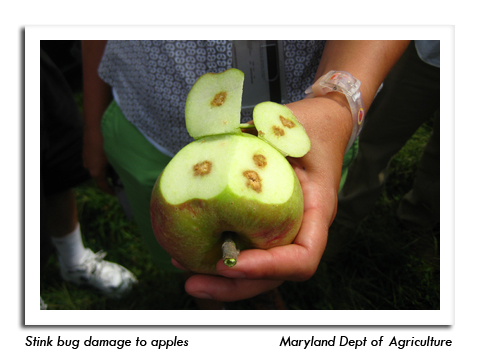
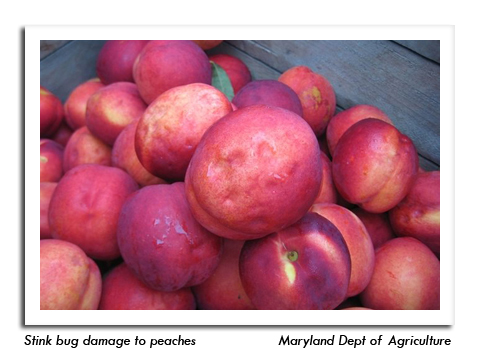
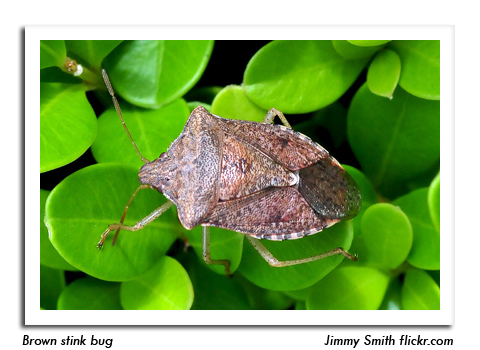

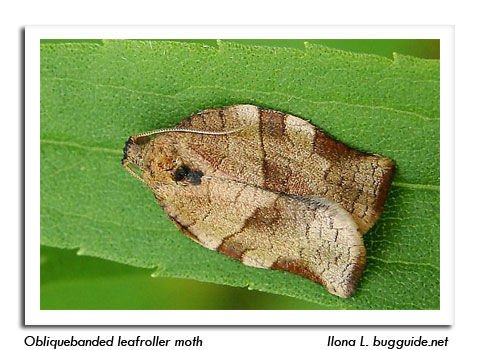
|
|
|